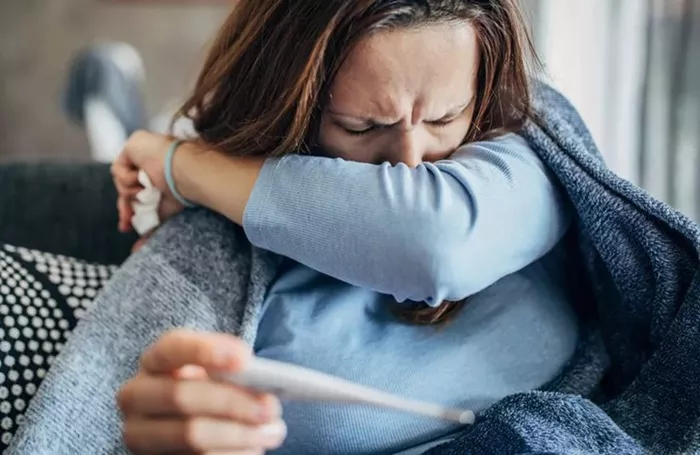Alarming Trends in Physical Activity Among Children
Physical activity is fundamental to the physical, emotional, and social development of children and adolescents. It fosters not only muscle strength and cardiovascular endurance but also cognitive function and emotional resilience. Yet for many children diagnosed with cancer, staying physically active becomes increasingly difficult. Treatment regimens such as chemotherapy, radiation, and extended hospital stays often result in fatigue, weakened immunity, and reduced mobility. As a result, physical activity levels drop sharply among pediatric cancer patients, putting them at increased risk of diminished functional capacity and lower health-related quality of life (HRQoL).
In Ecuador, this issue is particularly pressing. According to a 2021 report by the National Institute of Statistics and Census (INEC), one in five children participates in less than one hour of physical activity per week. This trend is concerning in the general population, but it is even more alarming for children undergoing cancer treatment, who arguably need physical activity the most. The lack of tailored physical activity programs in Ecuador highlights a critical gap in pediatric cancer care and underscores the urgency of intervention strategies aimed at this vulnerable population.
The Role of Supervised Exercise in Pediatric Oncology
Scientific literature increasingly supports the role of physical activity in managing cancer symptoms and treatment side effects. Supervised exercise programs, in particular, have been shown to yield significant benefits in pediatric oncology patients. These structured interventions not only promote physical wellness but also enhance psychological health, reduce fatigue, and improve social interaction and confidence.
However, while studies from high-income countries have reported promising results, little is known about how such interventions perform in low- and middle-income countries like Ecuador. Cultural differences, healthcare infrastructure, and socioeconomic challenges often affect the implementation and outcomes of health programs. Therefore, it becomes essential to generate localized evidence to evaluate the feasibility and effectiveness of structured exercise programs in settings where resources are more limited.
In Ecuador, despite the recognized importance of physical activity in managing chronic illnesses, no formal assessment has been conducted to determine the impact of structured exercise on children with cancer. The absence of such data makes it difficult for healthcare providers and policymakers to advocate for or design evidence-based interventions that could improve pediatric cancer care outcomes.
Designing a Study That Addresses the Gap
To fill this critical void in public health knowledge, a new study has been launched in Quito, Ecuador, aiming to assess the effects of a structured physical activity program on the HRQoL of children with cancer. Using a case-control design, the study enrolled 90 pediatric patients who were randomly assigned to two groups. One group—the intervention group—participated in a 10-week supervised exercise program tailored to their medical condition and physical capabilities. The other group—the control group—received standard care without any physical activity intervention. Social workers were available to conduct additional follow-ups for the control group when deemed necessary.
The supervised physical activity program was carefully crafted in collaboration with pediatric oncologists, physiotherapists, and psychologists. The exercises were age-appropriate and included aerobic, resistance, and flexibility components, all conducted under medical supervision. The intensity and duration of sessions were adjusted based on each participant’s energy level and treatment phase, ensuring that the activities were both safe and beneficial.
Both groups underwent standardized HRQoL assessments at three key stages: baseline (before the intervention), post-intervention (after 10 weeks), and follow-up (a set time after the intervention ended). These evaluations were designed to track physical, emotional, social, and functional well-being over time. The questionnaires used were internationally validated and adapted for local context to ensure reliability and cultural relevance.
The Human Side of the Study
The implementation of this program brought to light numerous personal stories that underscored the human importance of physical activity during illness. Children who had been previously confined to hospital beds began to express joy through movement. Some regained the ability to walk unaided after several weeks of structured exercises. Others reported less fatigue and were able to participate more actively in schoolwork and social activities. Parents noticed improved mood, better sleep patterns, and even increased appetites in their children.
For many participants, the exercise sessions became a source of hope and motivation. One child, previously withdrawn and lethargic, began to look forward to the sessions as the highlight of her week. Her mother shared that for the first time since the diagnosis, her daughter was laughing and engaging with others. In another case, a teenage boy who had lost interest in all hobbies rediscovered his love for football after joining the physical activity program. These individual narratives reveal the power of movement to restore not only physical function but also a sense of normalcy and joy.
The exercise program also provided a valuable platform for peer interaction. Children who once felt isolated due to their illness found companionship in group activities. The shared experiences created a support network that extended beyond the training room, helping them cope with the emotional burden of cancer. The psychosocial benefits observed were substantial and indicated that physical activity could act as a powerful adjunct therapy.
Measuring the Impact Scientifically
While anecdotal evidence and emotional stories highlight the qualitative benefits, the study was also focused on collecting robust quantitative data. The HRQoL surveys measured outcomes across multiple dimensions: physical functioning, emotional well-being, social functioning, and school performance. Preliminary results suggest statistically significant improvements in the intervention group compared to the control group across several metrics.
Children in the exercise group demonstrated better endurance and less fatigue. They also showed improvements in emotional scores, reporting less anxiety and depression. Socially, they felt more connected and reported stronger relationships with peers and family. Academically, fewer school absences and better concentration were recorded. These outcomes not only validate the role of physical activity in pediatric oncology but also establish a foundation for integrating such programs into national health policy.
The research team emphasized that improvements in HRQoL are not merely secondary benefits—they are critical indicators of treatment success and long-term survivorship. Children who maintain physical and emotional well-being during cancer treatment are more likely to adhere to medical regimens, recover more quickly, and resume normal life post-treatment.
Implications for Public Health Policy
This study offers valuable insights for healthcare professionals, educators, and policymakers in Ecuador and beyond. It demonstrates that structured physical activity is both feasible and effective in improving the well-being of children undergoing cancer treatment. More importantly, it provides a strong argument for integrating exercise into the standard pediatric oncology protocol, particularly in resource-limited settings.
Healthcare institutions can leverage these findings to advocate for funding, training, and infrastructure that support physical activity programs. Schools and community centers can also play a role in facilitating recovery by providing accessible, inclusive, and supervised exercise opportunities for children post-treatment. Social workers and psychologists should be trained to incorporate movement-based therapy into broader psychosocial support strategies.
The results also underscore the importance of interdisciplinary collaboration. Medical professionals, fitness experts, psychologists, and social workers must work together to design programs that are not only effective but also sustainable and scalable. Policymakers, in turn, must ensure that public health frameworks prioritize comprehensive care models that include physical activity as a key component.
The Road Ahead
As this pioneering study wraps up, its legacy may extend far beyond Ecuador. It sets a precedent for other low- and middle-income countries grappling with pediatric cancer and limited health resources. By proving that even modest interventions can yield substantial results, it opens the door for more inclusive, holistic, and compassionate cancer care.
The hope is that future national cancer strategies will not only focus on medication and hospital care but also embrace physical activity, mental health, nutrition, and community support as essential pillars of treatment. With continued research, stronger infrastructure, and wider public awareness, structured physical activity could become a standard part of pediatric oncology—not just in Quito, but across the globe.
Children with cancer face unimaginable challenges, but they also demonstrate remarkable resilience. Providing them with opportunities to move, play, and engage in physical activity is not just a medical intervention—it is a reaffirmation of their right to live fully, joyfully, and with dignity, even in the face of illness.
Related Topics


































